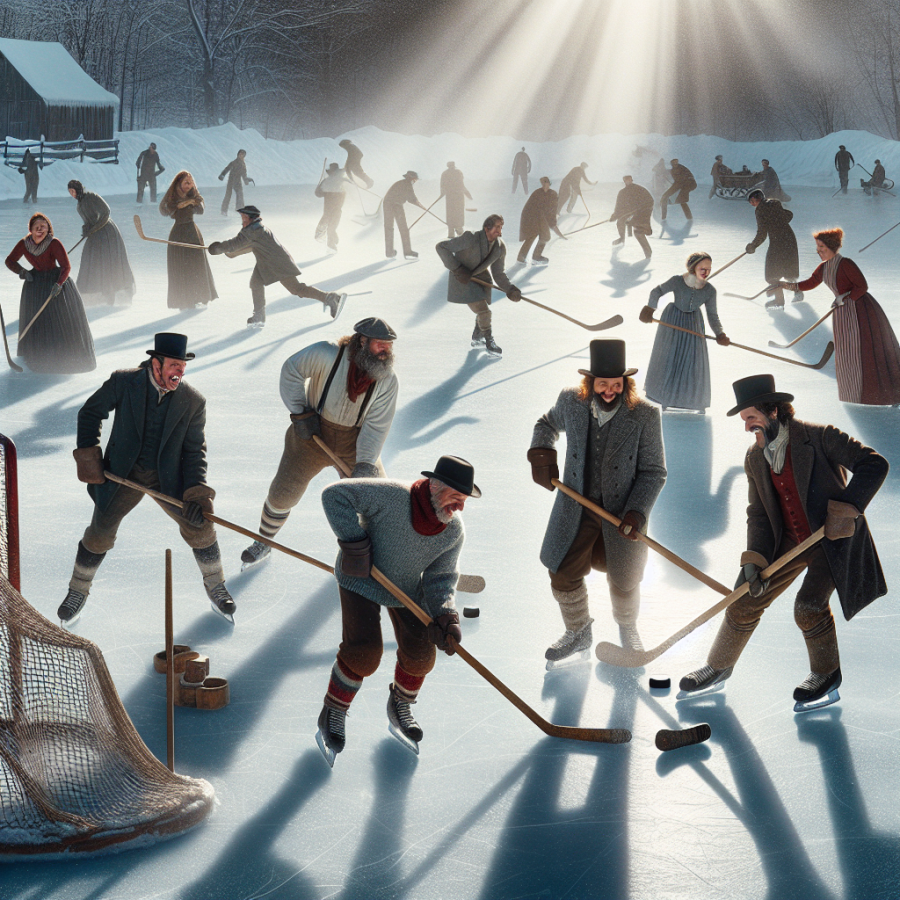Identifying the True Pioneers Behind the Birth of Ice Hockey
Ice hockey, widely recognized for its thrilling speed and heart-pounding action, has a history as rich and contested as the game itself. Pinpointing the exact origin and the individuals responsible for the birth of ice hockey is a challenging endeavor, as the sport evolved from a tapestry of stick-and-ball games played on ice. Nonetheless, historical accounts and evidence suggest several key figures and communities that played a pivotal role in shaping ice hockey as we know it today.
Ice hockey likely emerged in the 19th century, evolving from variations of field hockey adapted to ice conditions. These early renditions of the game were often played by British soldiers and immigrants on the frozen waterways of Canada. The first organized indoor game, which many cite as the formal beginning of modern ice hockey, took place on March 3, 1875, at the Victoria Skating Rink in Montreal, Quebec. This inaugural match was organized by James Creighton, a Nova Scotia-born McGill University student and a significant figure in the history of the sport.
Creighton, alongside other university students, introduced key rules and innovations during this period. For example, they established the use of rounded-off wooden pucks, instead of rubber balls that were previously used. This change in game equipment minimized the puck bouncing on the ice, allowing for a smoother game that resembled today’s ice hockey.
The contribution of the Mi'kmaq people of Nova Scotia is another important piece of the history. The Mi'kmaq have been credited with creating the first ice hockey sticks from hornbeam trees, known colloquially as "ironwood." Their role in crafting the instruments necessary for the emerging game was crucial in the sport's development.
Furthermore, the city of Kingston, Ontario, claims its own part in ice hockey’s history. Some argue that the sport was played there in the 1850s. Though documentation is sparse and often anecdotal, the debates around Kingston’s contribution depict a vivid example of the sport’s decentralized and community-driven origins.
Another noteworthy contributor is Sir Frederick Arthur Stanley, Lord Stanley of Preston, and the Governor-General of Canada. His donation of the Stanley Cup in 1892 as the championship trophy for the best hockey team in Canada was pivotal in solidifying ice hockey’s significance and promoting its growth as a competitive and organized sport.
Read also:
The Ultimate Guide to Kayaking: Beginner's Tips and Techniques
Unraveling the Historical Tapestry of Ice Hockey's Creation
Ice hockey, as we know it today, is a thrilling sport that has captured the hearts of millions around the globe. However, its origins are a blend of legacy, myth, and history, wrapped in the cold climes where it was birthed. The story of who really invented ice hockey is a complex tapestry, woven from threads of various games played on ice, across different cultures and eras.
The earliest precursors to ice hockey date back centuries. Some historians trace the game's lineage to an ancient field game called "hurling," played in Ireland as far back as 1272 BC. This sport, which involved hitting a small ball with a stick, was eventually adapted by British soldiers to be played on the ice, leading to the creation of "bandy." On the other side of the pond, in the frigid atmospheres of North America, Native American tribes like the Mi'kmaq played a stickball game called "oochamkunutk," which some argue contributed to the evolution of ice hockey.
The most direct antecedent of modern ice hockey, however, is believed to have developed in the United Kingdom. Around the 16th century, a game known as "IJscolf" or "colf on ice" was played in the Netherlands, and the similar game of "shinty" was played in Scotland. Both featured a stick and a ball, with the objective of hitting a target, such as a rock or a pole. These games are considered to have influenced the ice-based activities brought over by European immigrants to Canada.
The turning point for these amalgamated sports came in the 19th century in Canada, where various forms of "ice hurley" or "shinny" were popular during the winter months. By mid-century, these informal games were being formalized into the recognizable sport of ice hockey. The first recorded indoor ice hockey game took place on March 3, 1875, at the Victoria Skating Rink in Montreal, Québec. This pivotal event is often cited as the birth of the organized sport, where the contemporary rules of hockey began to take shape.
However, disputes over the true inventor of the sport have permeated the narrative. While Montreal is frequently named the birthplace of ice hockey, other claims have surfaced.




